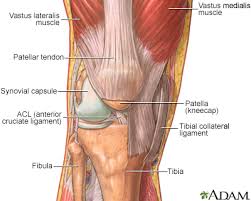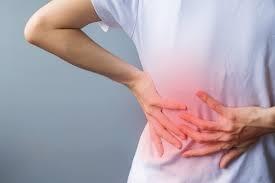Muscle spasms are sudden, involuntary contractions of one or more muscles. They can be painful and disruptive. Understanding the root causes helps in managing and preventing them. This article explores the primary reasons behind muscle spasms.
Dehydration
Dehydration occurs when the body loses more fluids than it takes in. Muscles need water to function properly. Without enough fluids, muscles become irritable. This irritability leads to spasms. Athletes and people who sweat heavily are at higher risk. Drinking enough water throughout the day is crucial. Electrolytes like sodium and potassium also play a role. They help maintain fluid balance. An imbalance can trigger muscle spasms.
Electrolyte Imbalance
Electrolytes are minerals in the body that carry an electric charge. They include sodium, potassium, calcium, and magnesium. These minerals are essential for muscle function. An imbalance disrupts normal muscle activity. Low levels of potassium or calcium are common culprits. Magnesium deficiency is another frequent cause. Eating a balanced diet helps maintain proper electrolyte levels. Supplements may be necessary in some cases.
Overuse of Muscles
Overusing muscles during physical activity can lead to spasms. This is common in athletes and people who engage in intense workouts. Overuse causes muscle fatigue. Fatigued muscles are more prone to involuntary contractions. Rest and proper warm-up exercises can prevent overuse. Stretching before and after activity also helps. It keeps muscles flexible and reduces the risk of spasms.
Poor Blood Circulation
Poor blood circulation limits the supply of oxygen and nutrients to muscles. This can cause muscle spasms. Conditions like peripheral artery disease contribute to poor circulation. Sitting or standing in one position for long periods also affects blood flow. Regular movement improves circulation. Simple exercises like walking or stretching can make a difference. Compression garments may help in some cases.
Nerve Compression
Nerves control muscle movements. Compression or irritation of nerves can lead to spasms. Conditions like herniated discs or carpal tunnel syndrome are examples. Nerve compression often causes pain along with spasms. Treatment focuses on relieving the pressure on the nerves. Physical therapy, medications, or surgery may be necessary.
Medications
Certain medications can cause muscle spasms as a side effect. Diuretics, used to treat high blood pressure, are a common example. They can lead to electrolyte imbalances. Statins, used to lower cholesterol, may also cause muscle issues. If you experience spasms after starting a new medication, consult your doctor. They may adjust the dosage or switch to a different drug.
Underlying Medical Conditions
Several medical conditions can cause muscle spasms. Diabetes affects nerve function and can lead to spasms. Thyroid disorders disrupt muscle metabolism. Kidney disease affects electrolyte balance. Multiple sclerosis and amyotrophic lateral sclerosis (ALS) are neurological conditions that cause muscle spasms. Managing the underlying condition is key to reducing spasms.
Stress and Anxiety
Stress and anxiety affect the body in various ways. They can lead to muscle tension and spasms. The body’s fight-or-flight response increases muscle activity. Chronic stress keeps muscles in a constant state of tension. Relaxation techniques like deep breathing and meditation help. Regular exercise also reduces stress levels.
Inadequate Stretching
Stretching keeps muscles flexible and reduces the risk of spasms. Inadequate stretching makes muscles tight and prone to involuntary contractions. Incorporating stretching into your daily routine is beneficial. Focus on major muscle groups. Hold each stretch for at least 30 seconds. Avoid bouncing, as it can cause injury.
Poor Posture
Poor posture puts strain on muscles. It can lead to spasms, especially in the back and neck. Maintaining good posture reduces unnecessary stress on muscles. Ergonomic furniture and proper workstation setup help. Regular breaks from sitting are important. Stretching and strengthening exercises improve posture over time.
Nutritional Deficiencies
Nutritional deficiencies can cause muscle spasms. Vitamins like D and B complex are essential for muscle health. A lack of these vitamins affects muscle function. Calcium and magnesium are also important. A balanced diet provides the necessary nutrients. Supplements may be needed if dietary intake is insufficient.
Alcohol and Caffeine
Alcohol and caffeine affect muscle function. Alcohol dehydrates the body and depletes electrolytes. Caffeine stimulates the nervous system and can lead to muscle tension. Limiting intake of these substances helps prevent spasms. Staying hydrated and maintaining electrolyte balance is important.
Hormonal Changes
Hormonal changes can trigger muscle spasms. Pregnancy often causes leg cramps due to hormonal shifts. Menopause affects muscle and bone health. Hormonal imbalances like those in thyroid disorders also play a role. Managing hormonal changes through medication or lifestyle adjustments helps reduce spasms.
Cold Weather
Cold weather causes muscles to contract. This increases the risk of spasms. Keeping muscles warm in cold conditions is important. Layering clothing and staying active help. Warm-up exercises before outdoor activities are essential. They prepare muscles for the cold and reduce the risk of spasms.
Aging
Aging affects muscle mass and function. Muscles lose elasticity and strength over time. This makes them more prone to spasms. Regular exercise and stretching help maintain muscle health. A balanced diet supports muscle function. Staying active is key to reducing age-related muscle issues.
Inactivity
Inactivity leads to muscle weakness and stiffness. Weak muscles are more likely to spasm. Regular physical activity keeps muscles strong and flexible. Even simple activities like walking or stretching make a difference. Incorporating movement into daily routines is important.
Sleep Position
Sleep position affects muscle health. Sleeping in awkward positions can cause muscle strain. This leads to spasms, especially in the neck and back. Using supportive pillows and mattresses helps. Changing sleep positions reduces the risk of muscle strain.
Infections
Infections can cause muscle spasms. Viral infections like the flu affect muscle function. Bacterial infections like tetanus cause severe muscle contractions. Treating the underlying infection is crucial. Vaccinations prevent certain infections that cause spasms.
Genetic Factors
Genetic factors play a role in muscle health. Some people are more prone to muscle spasms due to their genetic makeup. Conditions like muscular dystrophy affect muscle function. Understanding family history helps in managing and preventing spasms.
Conclusion
Muscle spasms have various root causes. Dehydration, electrolyte imbalance, and overuse are common triggers. Poor circulation, nerve compression, and medications also contribute. Underlying medical conditions, stress, and inadequate stretching play a role. Poor posture, nutritional deficiencies, and alcohol intake affect muscle health. Hormonal changes, cold weather, and aging increase the risk. Inactivity, sleep position, infections, and genetic factors are additional causes. Understanding these factors helps in managing and preventing muscle spasms. Maintaining a healthy lifestyle, staying hydrated, and regular exercise are key. Consult a healthcare professional for persistent or severe spasms. Proper diagnosis and treatment ensure better muscle health.



